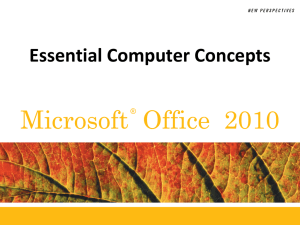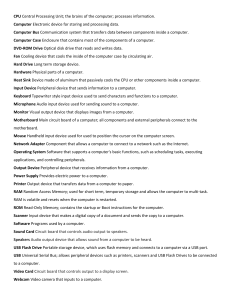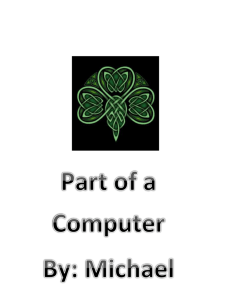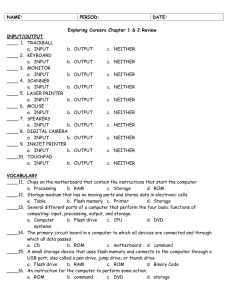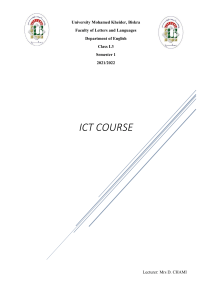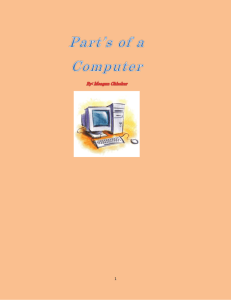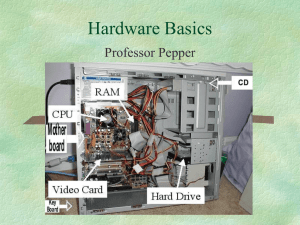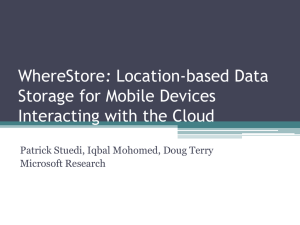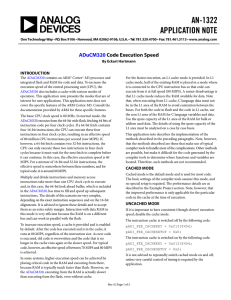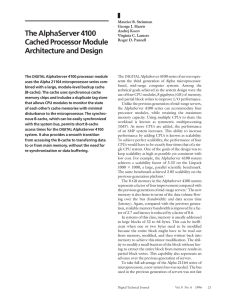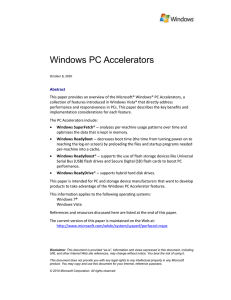Essential Computer Concepts
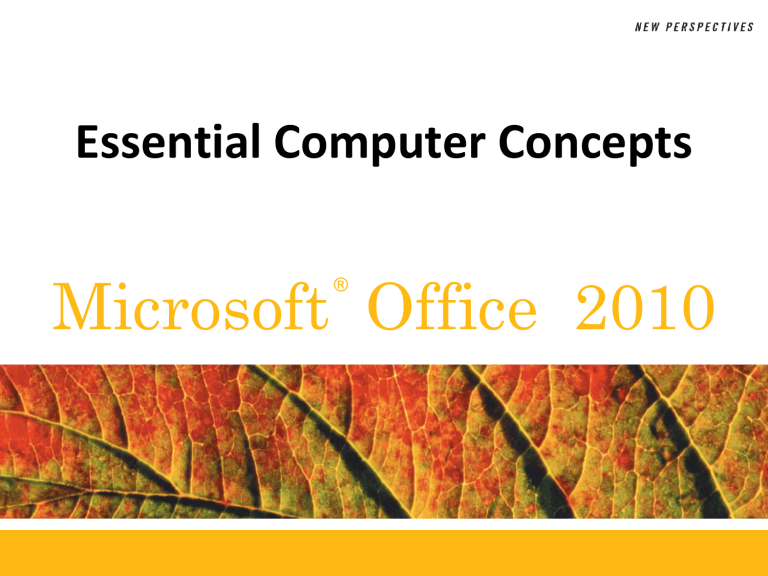
Essential Computer Concepts
Objectives
• Compare the types of computers
• Describe the components of a computer system
• Examine data representation and the ASCII code
• Learn about processing hardware
• Define memory and storage
• Describe input and output peripheral devices
Essential Computer Concepts 2
Objectives
• Identify the hardware and software that are used for data communications and to establish a network connection
• Explain how Internet access, email, and the World
Wide Web affect the use of computers
• Describe potential security threats to computers and protection methods
• Discuss the types of system software and their functions
• Identify popular application software
• Learn about cloud computing
Essential Computer Concepts 3
Computer Advertisement
Essential Computer Concepts 4
What Is a Computer?
• A computer is an electronic device that accepts information and instructions from a user, manipulates the information according to the instructions, displays the information in some way, and stores the information for retrieval later
Essential Computer Concepts 5
Types of Computers
• Desktop computers
• Notebook (laptop) computers
• Tablet PCs
• Subnotebook computers
• Netbooks
• Slate computers
• Handheld computers
• Smartphones
• MP3 players
• Mainframe computers
• Supercomputers
Essential Computer Concepts 6
Types of Computers
Essential Computer Concepts 7
Computer Systems
• Includes computer hardware and software
– Hardware refers to the physical components of a computer
– Software refers to the intangible components of a computer system, particularly the programs, or lists of instructions, the computer needs to perform a specific task
• The design and construction of the hardware of a particular computer is referred to as its architecture or configuration
• The technical details about each component are called specifications
Essential Computer Concepts 8
Data Representation
• Data refers to the words, numbers, figures, sounds, and graphics that describe people, events, things, and ideas
• Binary digits (bits)
• A series of eight bits is called a byte
– Kilobyte (KB or K)
– Megabyte (MB)
– Gigabyte (GB)
– Terabyte (TB)
• ASCII
– American Standard Code for Information Interchange
Essential Computer Concepts 9
Data Representation
Essential Computer Concepts 10
Processing Hardware
• The motherboard is the main electronic component of the computer
– Circuit board
• The microprocessor is one of the most important pieces of processing hardware on the motherboard
• Cards are removable circuit boards
Essential Computer Concepts 11
Memory
• Random access memory (RAM)
– Volatile memory
– SDRAM
• Cache memory (RAM cache or CPU cache)
• Virtual memory
Essential Computer Concepts 12
Memory
• Read-only memory (ROM)
– BIOS
– Boot process
– Nonvolatile memory
• Complementary metal oxide semiconductor
memory (CMOS)
• Semipermanent memory
Essential Computer Concepts 13
Storage Media
• A computer file is a named collection of stored data
• An executable file contains the instructions that tell a computer how to perform a specific task
• A data file is created by a user
Essential Computer Concepts 14
Storage Media
• Magnetic storage media
– A hard disk contains several magnetic oxidecovered metal platters that are usually sealed in a case inside the computer
Essential Computer Concepts 15
Storage Media
• Optical storage device
– CD
– DVD
– CD-R
– CD-RW
– CD-ROM
– DVD-R
– DVD+R
– DVD-RW
– DVD+RW
– BD-RE
Essential Computer Concepts 16
Storage Media
• Flash memory
– Solid state storage
– Flash memory cards
– USB flash storage device
• USB flash drive
Essential Computer Concepts 17
Input and Output
• The data or instructions you type into the computer are called input
• The result of the computer processing your input is referred to as output
• Peripheral devices accomplish input and output functions
Essential Computer Concepts 18
Input Devices
• You use an input device, such as a keyboard or a mouse, to input data and issue commands
– Keyboard
• Ergonomic
– Pointing device
• Controls the pointer
• Mouse
– Scroll wheel
• Trackball
• Touchpad
• Pointing stick
– Touchscreen
– Scanner
Essential Computer Concepts 19
Output Devices
• Output devices show you the results of processing data
– Monitor
• Flat panel
• LCD
• LED
– Printer
• Laser
• Inkjet
• Dot matrix
Essential Computer Concepts 20
Data Communications
• The transmission of text, numeric, voice, or video data from one computer to another or to a peripheral device is called data communications
– Sender and receiver
– Channel
– Protocol
– Device driver (driver)
Essential Computer Concepts 21
Data Bus
• This path between the microprocessor, RAM, and peripherals is called the data bus
• Controller card
• Expansion card
• Expansion slot
Essential Computer Concepts 22
Networks
• A network connects one computer to other computers and peripheral devices, enabling you to share data and resources with others
• Network interface card (NIC)
• LAN
• WAN
• WLAN
• PAN
• WiMax
Essential Computer Concepts 23
Telecommunications
• Telecommunications means communicating over a comparatively long distance using a phone line or some other data conduit
– Modem
• Digital and analog signals
– DSL
– Broadband connections
Essential Computer Concepts 24
The Internet
• The Internet is the largest network in the world, connecting millions of people
– World Wide Web
• Web page
• Web site
Essential Computer Concepts 25
Security Threats on Your
Computer
• Security refers to the steps a computer owner takes to prevent unauthorized use of or damage to the computer
– Malware
• Viruses
– Antivirus software
• Spyware
• Adware
• Firewall
• Spoofed site
• Phishing
• Pharming
Essential Computer Concepts 26
System Software
• System software helps the computer carry out its basic operating tasks
– Operating system
• System resource
• Multitasking
– Utilities
– Programming
Languages
Essential Computer Concepts 27
Application Software
• Application software enables you to perform specific computer tasks, such as document production, spreadsheet calculations, and database management
– Document production software
Essential Computer Concepts 28
Application Software
– Web site creation and management software
– Spreadsheet software
– Database management software
Essential Computer Concepts 29
Application Software
• Presentation software
Essential Computer Concepts 30
Application Software
• Photo editing software
• Video editing software
• Multimedia authoring software
• Accounting software
• Information management software
Essential Computer Concepts 31
Computing in the Cloud
• Cloud computing means that data, applications, and even resources are stored on servers accessed over the Internet rather than on users’ computers, and you access only what you need when you need it
– Windows Live SkyDrive
Essential Computer Concepts 32
